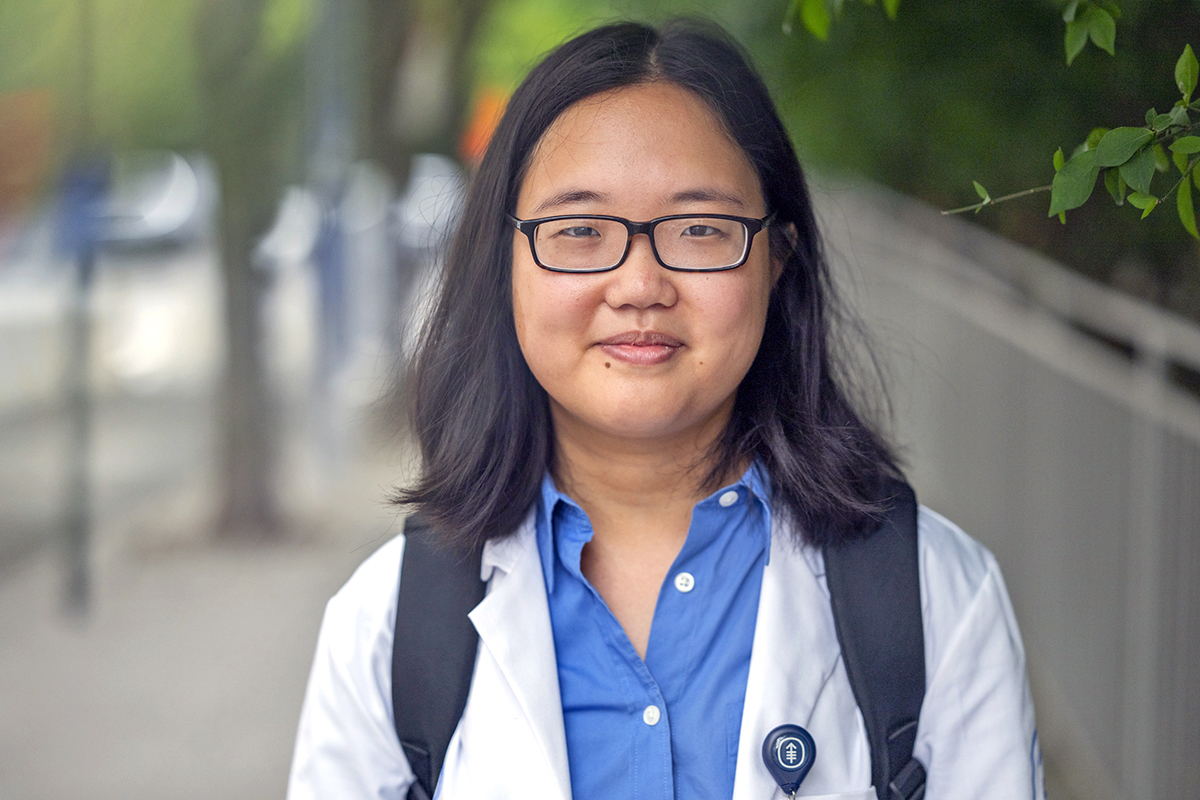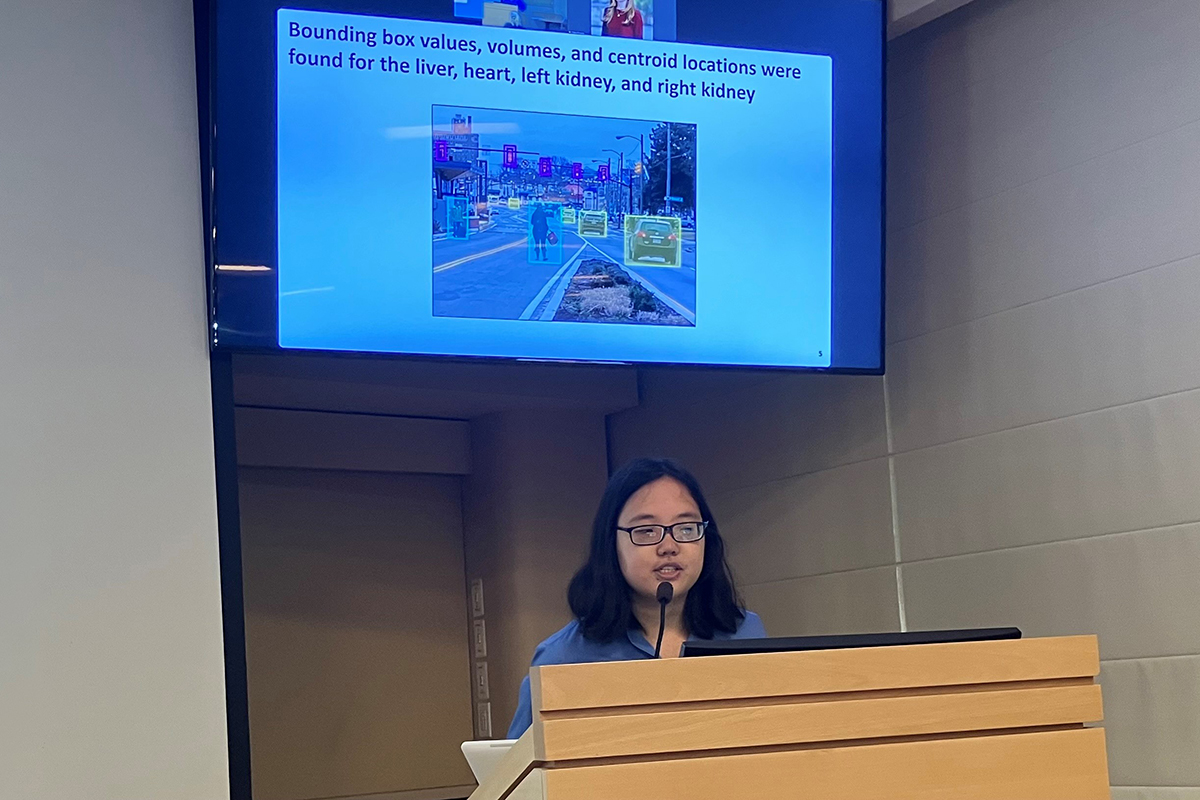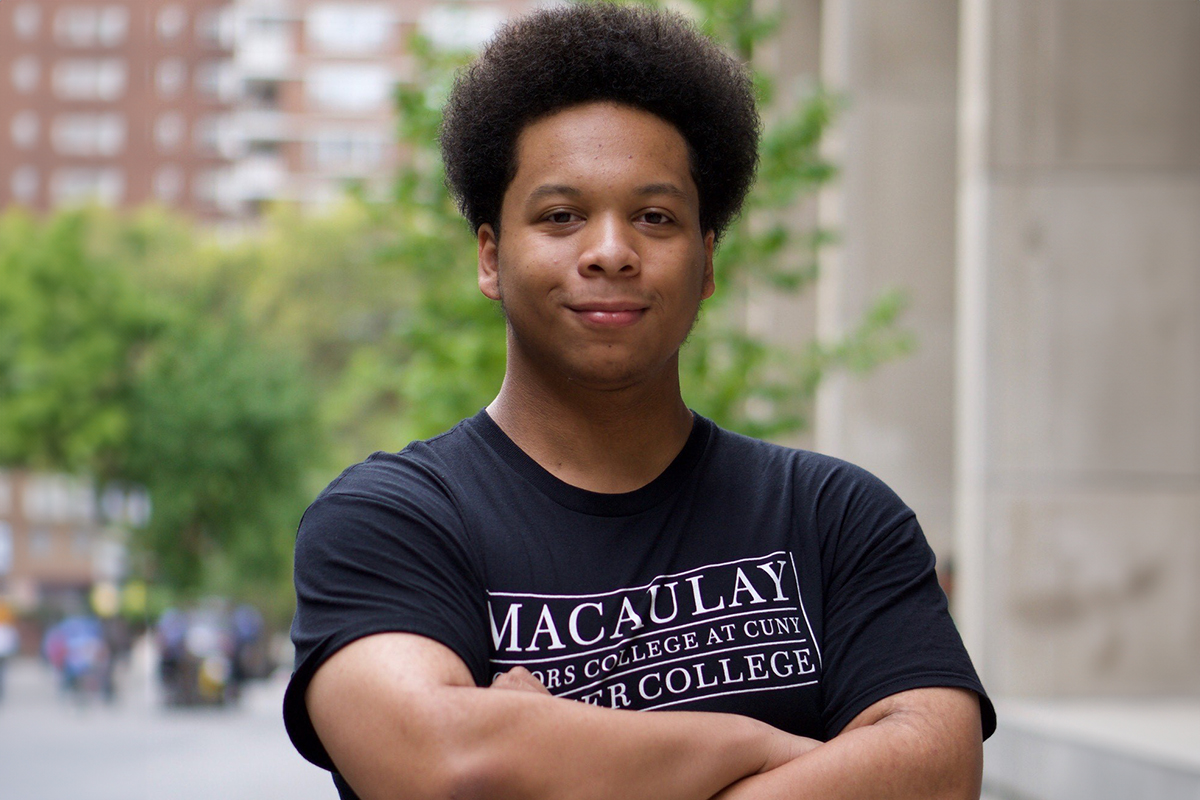
Every summer, curious college students have a chance to get a feel for what it’s like to be a cancer researcher.
Memorial Sloan Kettering Cancer Center (MSK) chooses 10 students from underrepresented communities to participate in an 8-week internship called the Summer Clinical Oncology Research Experience (SCORE). It is designed to encourage undergraduates to consider careers in cancer research and clinical care.
“I think science is what I’m good at, but I really enjoy being part of patient care, finding ways to improve it,” says Sophia Liang, a 2024 SCORE student. “I wanted to learn more about these fields to help decide what I wanted as a career, and this program was a great way to experience that.”
Sophia grew up in Flushing, Queens, a daughter of immigrants from Taiwan. At City College of New York (CCNY), she majored in biology and envisioned a pre-med path. But when she took time off to serve as a gastroenterology technician at a local clinic, her interests began to broaden beyond being a doctor.
SCORE offered the chance to further explore her options. “The best part of this new experience was the variety of people I met,” she says. “It really helped me to see what I wanted for my future.”
The SCORE Internship Program
SCORE students attend lectures and workshops, and get the chance to observe clinics. They learn research techniques, as well as the communication skills essential for a scientist. There are also lessons in career development and practical tips.

Students are paired with a mentor to work on a research project. At the end of the program, each participant writes a one-page abstract and gives a brief presentation about their findings to the other students and program leaders.
“We provide a nurturing environment for these students to conduct research, as well as build a community through an exciting learning experience,” says epidemiologist Sigrid Carlsson, MD, PhD. Dr. Carlsson became SCORE director in 2023, taking over from Laura Liberman, MD, former MSK Director of Faculty Development, who founded the program in 2010. The program is now run by the Office of Education and Faculty Affairs.
Study Demonstrates SCORE’s Success
Since its founding, SCORE has accomplished its goal of drawing more people from diverse backgrounds into scientific careers. A study led by Dr. Liberman and reported in 2023 in the Journal of Cancer Education looked at the career paths of 116 students who participated in SCORE over the first decade (2010–2019).
Among these students, roughly 70% were either immigrants to the U.S. or children of immigrant parents, and 40% were the first generation in their family to attend college.
As of 2021:
- 98% had pursued careers involving science, technology, engineering, mathematics, and medicine (STEMM).
- 38% were in medical school, 12% were medical residents, and 2% were already practicing physicians.
- 54% had already co-authored peer-reviewed publications, 69% of which were cancer-related.
“We’ve had great success in showing students the attraction of a scientific career,” Dr. Carlsson says.
The SCORE students receive guidance from peer mentors who are former SCORE participants themselves, as well as from Dr. Carlsson, Anu Ashok, Director of the Office of Education and Faculty Affairs, and project coordinator Mary Porpora.
Researching Radiation Treatments
Sophia was matched with attending physicist Guang Li, PhD, who researches ways to improve radiation treatments. Her project involved studying a technique called deep inspiration breath hold (DIBH), which is designed to limit radiation to the heart for breast cancer patients and can also minimize movement in stomach, pancreas, and liver cancer patients. During treatment, patients take a deep breath in and hold it for a short time.
One potential drawback of DIBH is organs in the abdomen might become compressed, which may lead to more radiation spillage to normal tissue squeezed toward the tumor. In addition, it has not been clear whether patients can reliably inhale and hold their breath the same amount every time, ensuring the organs end up in the same place. So DIBH might not work as well for treating certain cancers — perhaps breath hold at expiration (holding breath after exhaling) would be preferable for treating abdominal patients.
Sophia studied CT scans from 42 patients who were scanned both in DIBH and normal breathing. Training allowed her to do much of the analysis using clinical software remotely, from a computer at home in Queens. The results demonstrated a variety of outcomes, with about 60% of patients having organ compression in the abdomen.
Further research is needed to finalize the findings, but Sophia learned that’s typical for a patient population with diverse anatomy in many investigative projects.

And she found the whole experience to be invaluable. In addition to learning how to analyze data, she especially enjoyed the weekly “huddles” with other students to discuss their projects. These were led by teaching fellow Zara McPartland, a former SCORE student from CCNY, who presented and reviewed techniques and materials for the students’ abstracts and presentations.
Sophia’s time at MSK also fostered her growing interest in nursing.
“I came to understand the education required, as well as what life in the role is like,” she says. “It sounds great, and I now plan to become a nurse-scientist, working with patients and engaging in research. I also hope to work at MSK someday.”
Studying Disparities in Gynecologic Care
Isaiah Caines, a rising sophomore at Hunter College in New York City, wanted to learn more about the gap between Black gynecologic oncologists and Black patients with gynecologic cancers.
He was inspired after reading about Henrietta Lacks, a Black woman whose cervical cancer cells were biopsied in 1951 and became the source of the first immortalized human cell line. Neither Lacks nor her family were compensated for the cell line, known as HeLa, which is still used for medical research.
“We were wondering: ‘What if Henrietta Lacks had a Black doctor as her provider?’” Isaiah says. “How differently would things have been for her and her family? It highlighted the American healthcare system’s failure toward Black women with gynecologic cancer.”

Isaiah was guided by his mentors in the Immigrant Health and Cancer Disparities Service, hospitalist Lisa Diamond, MD, MPH, psychiatrist Monique James, MD, and clinical fellow Gleneara Bates-Pappas, PhD. He gathered information on the incidence and death rates of three common gynecologic cancers (ovarian, endometrial, and cervical) in Black women, as well as the percentage of gynecologic oncologist fellows who are Black.
The data showed that Black women have the highest incidence and worst survival rates for endometrial and cervical cancers. In fact, Black women are twice as likely to die from endometrial cancer as white women.
And yet, the percentage of Black gynecologic fellows is very low — about 6%.
“Research has already shown that there are benefits when patients receive care from a doctor who is the same race and gender,” Isaiah says. “There are cultural reasons because someone raised in the same environment might know something other doctors would not. Having that viewpoint can not only help treat diseases but also prevent people from getting them in the first place.”
Isaiah will continue his research over the next year, working with his MSK mentors to shed more light on the barriers to care.
Isaiah hopes to become an emergency room physician someday, while conducting research part time. He is especially interested in further research on health discrepancies.
“I’ve experienced the consequences of health disparities with family members who passed away because they couldn’t afford treatments and other factors,” he says. “It’s something that has concerned me throughout my life, and SCORE has propelled me to continue this research.”
